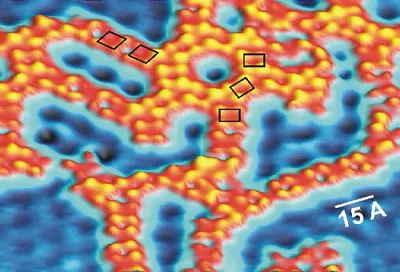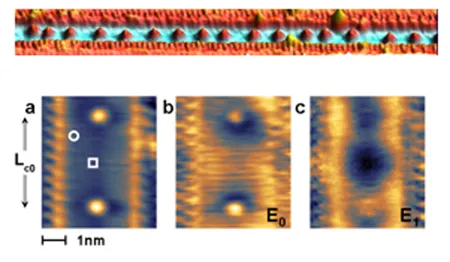Quantum Confinement
Self-assembled quantum confinement geometries for electron wave function tailoring
The engineering of electron wave functions in reduced dimensions is a formidable playground for quantum mechanics and opens up new vistas for advanced materials and device concepts. In particular, the quasi two-dimensional electron gas of surface states at metals is a medium offering fascinating opportunities in this respect, and atom manipulation techniques rendered striking demonstrations of its confinement to quantum corrals and other arrangements.

Our research team introduced a novel bottom-up method for the fabrication of electron confinement structures at the nanometer scale, based on molecular self-assembly. As an example for the basic principle the above figure demonstrates the scattering and confinement of surface state electrons by porphyrin structures on a Cu(111) surface. In a more detailed study we employed self-assembled methionine superlattices (see left panel below) to systematically tune the characteristics of Ag(111) surface electrons in one-dimensional resonators. The properties of the resulting quantum well states were analyzed by scanning tunneling spectroscopy measurements revealing distinct Fabry-Pérot modes and interference patterns (right panels below).

In a subsequent step we accomplished 0D confinement in quantum corrals by aligning single Fe atoms between molecular walls acting as electron reflectors (see figure below). The spatial extent of the quantum resonators was regulated in the 1 - 20 nm range by self-assembly control or single atom positioning.
